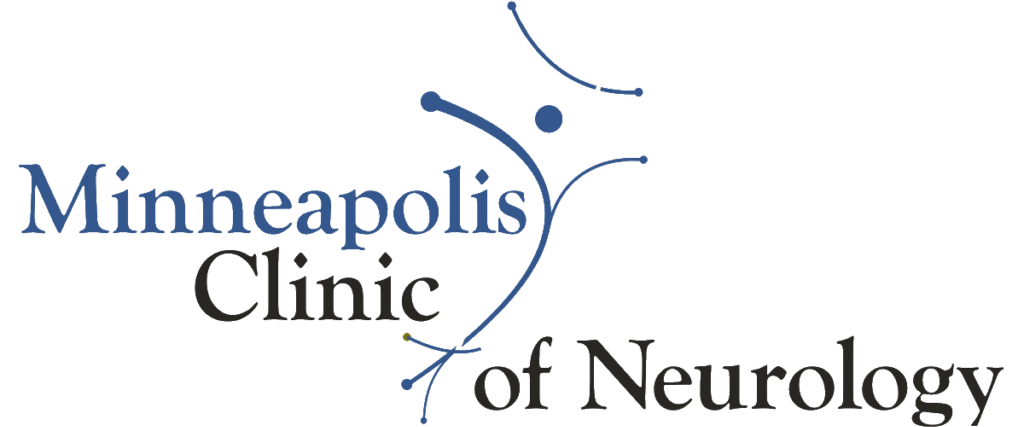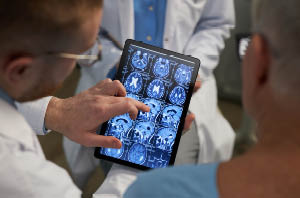Early Answers, Lasting Hope
When Dr. Shelly Larson-Peters first chose neurology, she was drawn to what she calls “the mystery of the brain.” Today, as a board-certified neurologist specializing in multiple sclerosis (MS) and headache medicine at the Minneapolis Clinic of Neurology’s Coon Rapids location, she continues to uncover those mysteries every day—helping patients find answers, stability, and hope.
“Helping people and giving them understanding of their disease means everything,” Dr. Larson-Peters said. “The disease doesn’t define who they are—they define who they are.”
Why Early Diagnosis Matters
Minnesota has one of the highest rates of multiple sclerosis in the country, which means early detection is especially important for local patients. Yet, many people delay care when symptoms appear subtle or short-lived.
“MS can be hard to recognize early because symptoms can come and go,” Dr. Larson-Peters explained. “People might notice tingling, clumsiness, or vision changes and think it’s nothing. But those can be early signs.”
When new or unusual neurological symptoms appear—such as sudden vision loss, weakness, or confusion—Dr. Larson-Peters urges people not to wait.
“Sometimes it’s just best to get checked out right away,” she said. “Even if it turns out to be nothing serious, it’s better than missing something that could be treated.”

Advancements in MS Care
The field of neurology has changed dramatically over the past two decades. Twenty years ago, there were only a few treatment options for MS. Today, patients have access to more than 20 disease-modifying therapies that can significantly slow or even prevent disability progression.
“We’ve seen tremendous progress,” Dr. Larson-Peters said. “If you can get a diagnosis early, we’re able to start treatment and help people live nearly normal lives.”
This progress has transformed what it means to live with MS. Patients can now expect to stay active, continue working, and maintain a high quality of life with the right care plan.
What to Expect at Your First Neurology Visit
For many, seeing a neurologist for the first time can feel intimidating. Dr. Larson-Peters makes the process approachable.
“The first visit is really a conversation,” she explained. “We’ll talk through symptoms, do a full neurological exam, and decide what testing is needed from there.”
Common MS testing may include:
- MRI scans to detect inflammation or lesions on the brain and spinal cord
- Blood work to rule out other conditions
- Lumbar puncture (spinal tap) to check for inflammation in the cerebrospinal fluid
- EEG or EMG if other nerve-related symptoms are present
She recommends patients write down their symptoms and questions beforehand so nothing important is forgotten during the appointment.
Being Seen Sooner Makes All the Difference
The Be Seen Sooner initiative at the Minneapolis Clinic of Neurology ensures that patients don’t have to wait months for specialized care.
“We can often get people in within a few weeks,” Dr. Larson-Peters said. “At some places, it can take four to six months or longer. The sooner we see you, the sooner we can get answers and start treatment.”
This faster access helps prevent disease progression and offers reassurance to patients who may be feeling anxious or uncertain about what’s next.
A Team Built on Expertise and Compassion
Dr. Larson-Peters says what makes MCN special is the combination of expertise and teamwork.
“We have an incredible group of neurologists, many with subspecialties,” she said. “We also offer comprehensive in-house testing like MRI, EMG, EEG, and lab services, plus infusion therapy and physical therapy support. It’s all about providing complete care in one place.”
Her enthusiasm for her work is unmistakable.
“I love helping people,” she shared. “It’s about giving them hope and helping them realize that they can still define their own lives, even with a diagnosis.”
Key Moments from the Episode
- [00:00:27] Why Dr. Larson-Peters chose neurology and MS care
- [00:01:30] Why Minnesota has one of the highest MS rates in the U.S.
- [00:03:12] Early MS symptoms patients shouldn’t ignore
- [00:04:29] What to expect during a first neurology visit
- [00:06:22] How MCN helps patients be seen sooner
- [00:07:33] The importance of hope and redefining life after diagnosis
Meet the Specialists You Can See Sooner
The Minneapolis Clinic of Neurology offers accessible, patient-centered care across several specialties.
Dr. Jessica Piché, MD – Multiple Sclerosis Specialist, Edina
Meet Dr. Piché →
Dr. Beth Ann Staab, MD – Epilepsy & Neuromuscular Disorders, Coon Rapids
Meet Dr. Staab →
Dr. Shelly Larson-Peters, MD – Multiple Sclerosis & Headache, Coon Rapids
Meet Dr. Larson-Peters →
Dr. Gerald Dove, MD – Epilepsy, Clinical Neurophysiology & General Neurology, Golden Valley
Meet Dr. Dove →
Whether you’re managing MS, headaches, or other neurological symptoms, our team is ready to help you be seen sooner and find the care you need.
Be Seen Sooner
At the Minneapolis Clinic of Neurology, every patient deserves timely care and compassion. If you or someone you know is experiencing neurological symptoms, ask your provider for a referral today.
🎧 Listen to Dr. Larson-Peters’ full Be Seen Sooner podcast episode to learn how early MS diagnosis and personalized care can help patients find hope and stay strong.



